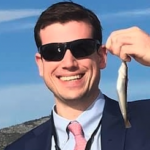As some EM4Fish readers may have seen, the National Fish and Wildlife Foundation (NFWF) recently posted the 2024 Request for Proposals for its Electronic Monitoring and Reporting (EMR) Grant Program. Since its inception in 2015, NFWF’s EMR Grant Program has been a major catalyst for the continued evolution of electronic technologies (ET) as they pertain to fisheries management, awarding 112 projects for a total of nearly $33 million (and leveraging matching contributions of nearly $50 million). Past projects that have been funded by the program can be found here.
For this year’s grant cycle, NFWF anticipates awarding up to $4.8 million to support ET projects in U.S. fisheries. Projects can be focused on 1) the development and/or expansion of electronic technologies for data collection, or 2) modernizing data management systems to improve the usability of electronically collected information. Applicants are encouraged to review NOAA Fisheries’ Regional ET Implementation Plans to get a sense of the most pressing needs in their region. Close readers of the RFP may notice a new callout of funds available to work on specific aspects of Gulf of Mexico state-permitted shrimp fisheries. If you are interested in this project area, please reach out. Additional details on the grant opportunity can be found here. Proposals are due on Monday, October 2, 2024 by 11:59 pm ET. NFWF will host an informational webinar to provide details on this opportunity on Wednesday, July 31, 2024, from 3:00-4:00 pm ET: Register here.
As a Field Liaison for this year’s EMR Grant Program application cycle, my goal is to help spread awareness of the opportunity in communities who may not know about the program, identify prospective applicants, brainstorm project ideas, and serve as a resource when developing application materials.
NFWF is committed to broadening the EMR grant program’s reach, and generally, to lowering the barrier to submitting applications, especially given that EMR projects are frequently fishermen-driven in nature, with prospective applicants who may be less familiar with the nuances of proposal-writing. Readers who have applied in past EMR grantmaking cycles can attest to the fact that the application process can be challenging, between the project narrative, identification of partners, understanding the budget and matching contributions (this NFWF opportunity requires a 1:1 match), and coordinating letters of support, among others (NFWF does have an Proposal Tip Sheet available on its website).
I encourage any individuals or groups that are interested in learning about this opportunity to contact me via email (wgoldsmith@pelagicstrategies.com) or phone (617-763-3340) to get the conversation started. For others who are more seasoned when it comes to NFWF grants, I am of course also available to talk through any elements of the application process for which I can be helpful. Lastly, even if you don’t need assistance with a proposal or are not planning to apply for this round of support, I ask you to please circulate this message among members of your network in order to cast as wide a net as possible and inject some new ideas into the ET conversation.


